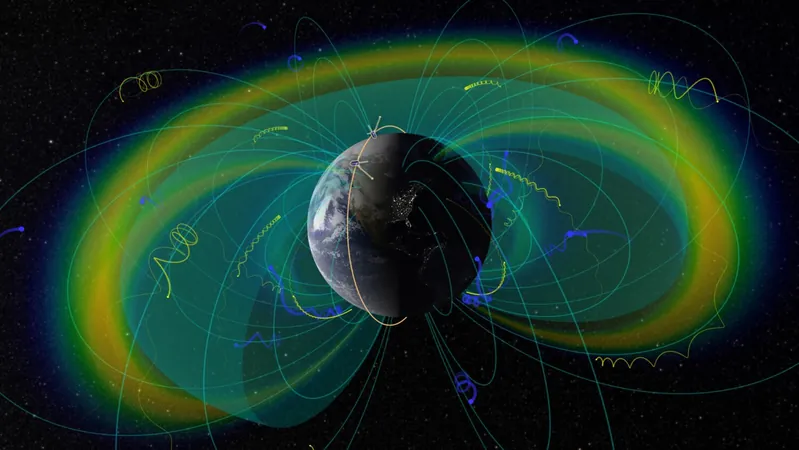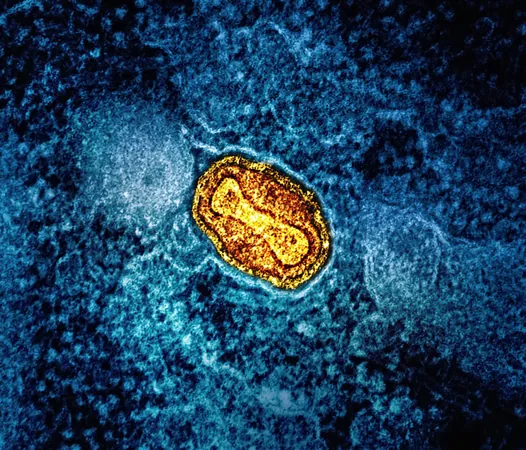
Killer Electrons: How Lightning Storms Shape Space Weather and Endanger Satellites
2024-10-12
Author: Liam
Introduction
Recent research from the University of Colorado Boulder has unveiled a startling connection between Earth's lightning storms and the hazardous "killer electrons" floating in space. Led by undergraduate Max Feinland, the study indicates that intense lightning strikes can dislodge high-energy electrons from the inner radiation belt, potentially affecting both satellites and astronauts' safety in space.
Research Context
Feinland, who completed his aerospace engineering degree in 2024, emphasized the dangers posed by these high-energy electrons, which can penetrate satellite structures and pose serious health risks to astronauts, including carcinogenic effects from exposure in space. The study, published on October 8 in *Nature Communications*, highlights the unanticipated relationship between weather phenomena on our planet and the dynamics of space weather.
Understanding Earth's Radiation Belts
Earth's radiation belts, which endure constant flux, are formed by the planet's magnetic field and surround the Earth like protective layers. The inner belt typically starts more than 600 miles above the surface, while the outer belt begins around 12,000 miles away. While scientists were already aware that high-energy electrons could fall from the outer radiation belt, this new research is the first to reveal that similar phenomena also occur within the inner belt.
Interconnectivity of Earth and Space
This interconnectivity prompts a reconsideration of how we perceive Earth and space as segregated realms. "Space weather is driven both from above and below," noted Lauren Blum, co-author of the study and assistant professor at CU Boulder.
The Power of Lightning
The research illustrates the remarkable power of lightning. When a strike occurs, it generates radio waves that propagate into space and can disturb the electrons in the radiation belts. This phenomenon, termed "lightning-induced electron precipitation," not only influences the radiation environment but might also affect atmospheric chemistry.
A Surprising Discovery
Feinland's breakthrough began unexpectedly while analyzing data from NASA's former SAMPEX satellite. He observed unusual clusters of high-energy electrons in the inner belt—a discovery that prompted deeper investigation alongside Blum. Over a ten-year span, Feinland noted 45 instances of electron surges closely timed with lightning strikes in North America, often occurring in a matter of seconds after the lightning event.
The Mechanism Behind Electron Surges
The researchers theorize that the immense energy from lightning acts like a trigger, sending these electrons into a chaotic "pinball" game: they bounce between Earth's hemispheres at an astonishing speed, eventually falling out of the radiation belt and into the atmosphere. "You have a big blob of electrons that bounces, and with each bounce, some of them fall out," explained Blum.
Future Research Needs
Although the frequency of these events is still uncertain—they may peak during periods of heightened solar activity—the findings underscore an urgent need for further research. The aim is to develop predictive models that could safeguard both human and satellite operations in orbit from this perilous rain of "killer electrons."
Conclusion
Feinland expressed gratitude for this research opportunity, revealing, "I didn't even realize how much I liked research until I got to do this project." As scientists continue to unravel the ties between terrestrial weather and space phenomena, the implications of their findings could spell major advancements in our understanding of the radiation environment and its influence on modern technology.
Final Thoughts
Stay tuned as this groundbreaking research reshapes our knowledge of Earth's atmospheric interactions with outer space!









 Brasil (PT)
Brasil (PT)
 Canada (EN)
Canada (EN)
 Chile (ES)
Chile (ES)
 España (ES)
España (ES)
 France (FR)
France (FR)
 Hong Kong (EN)
Hong Kong (EN)
 Italia (IT)
Italia (IT)
 日本 (JA)
日本 (JA)
 Magyarország (HU)
Magyarország (HU)
 Norge (NO)
Norge (NO)
 Polska (PL)
Polska (PL)
 Schweiz (DE)
Schweiz (DE)
 Singapore (EN)
Singapore (EN)
 Sverige (SV)
Sverige (SV)
 Suomi (FI)
Suomi (FI)
 Türkiye (TR)
Türkiye (TR)